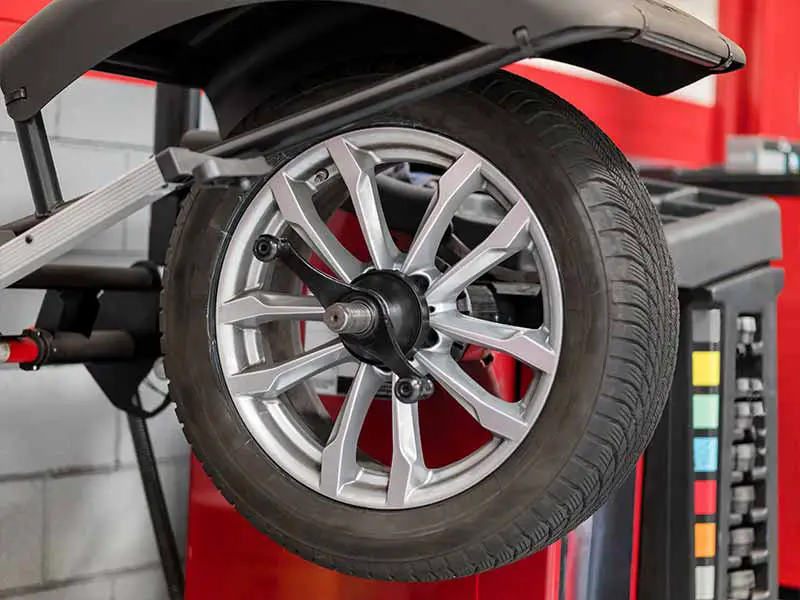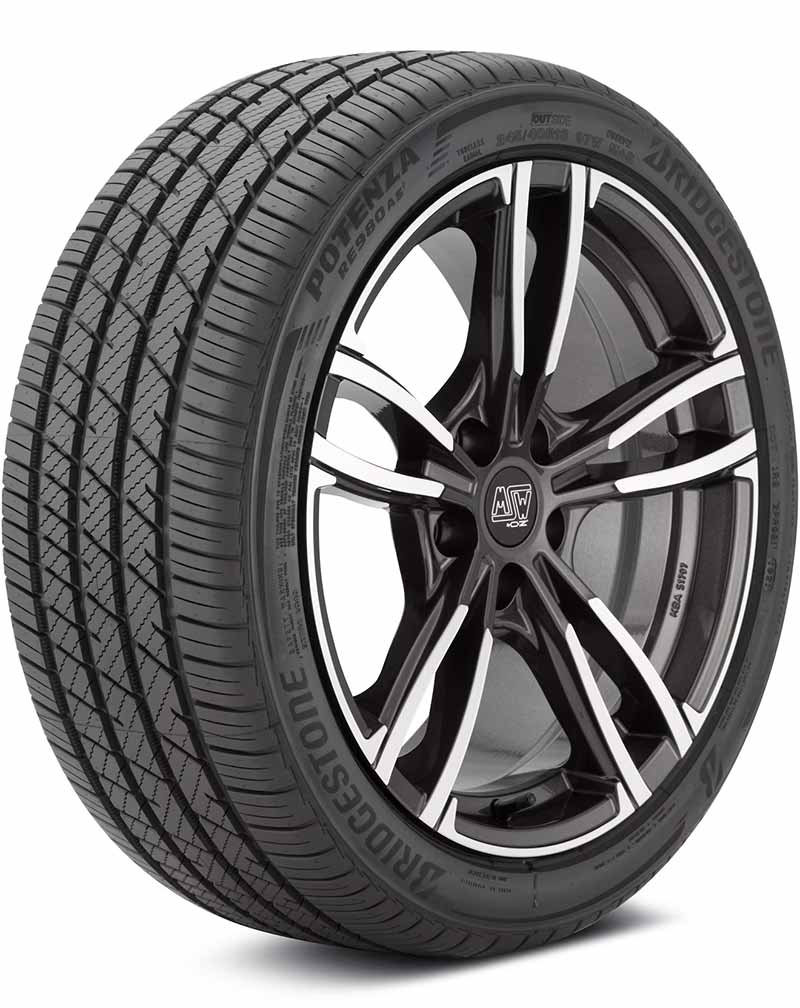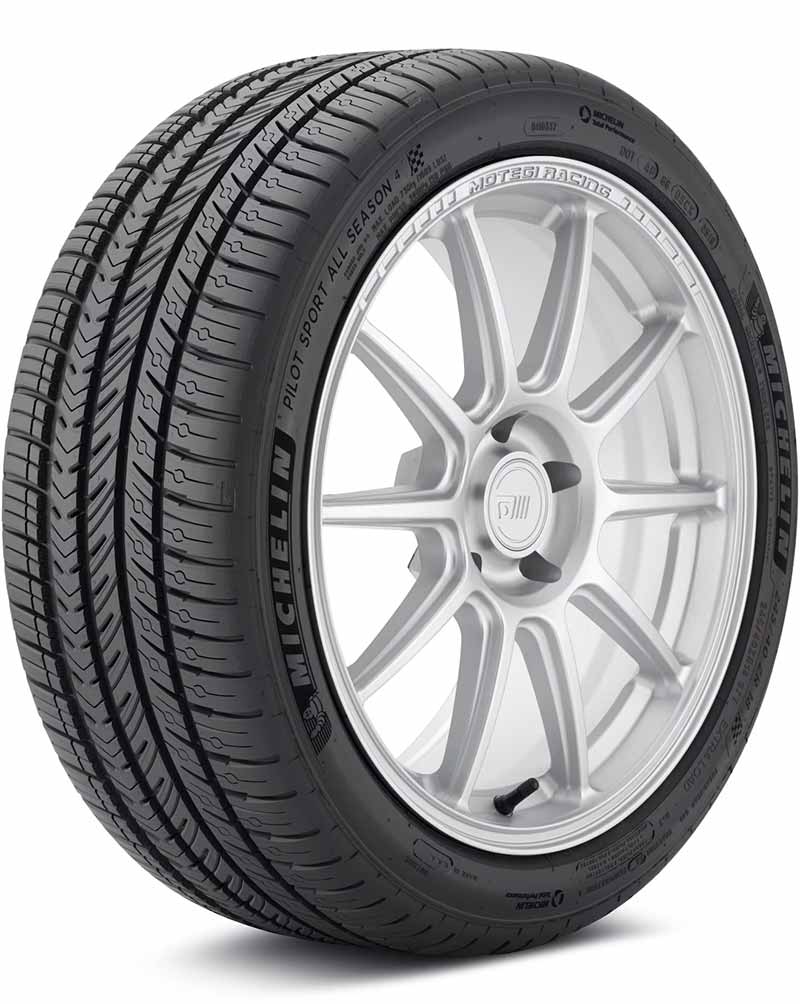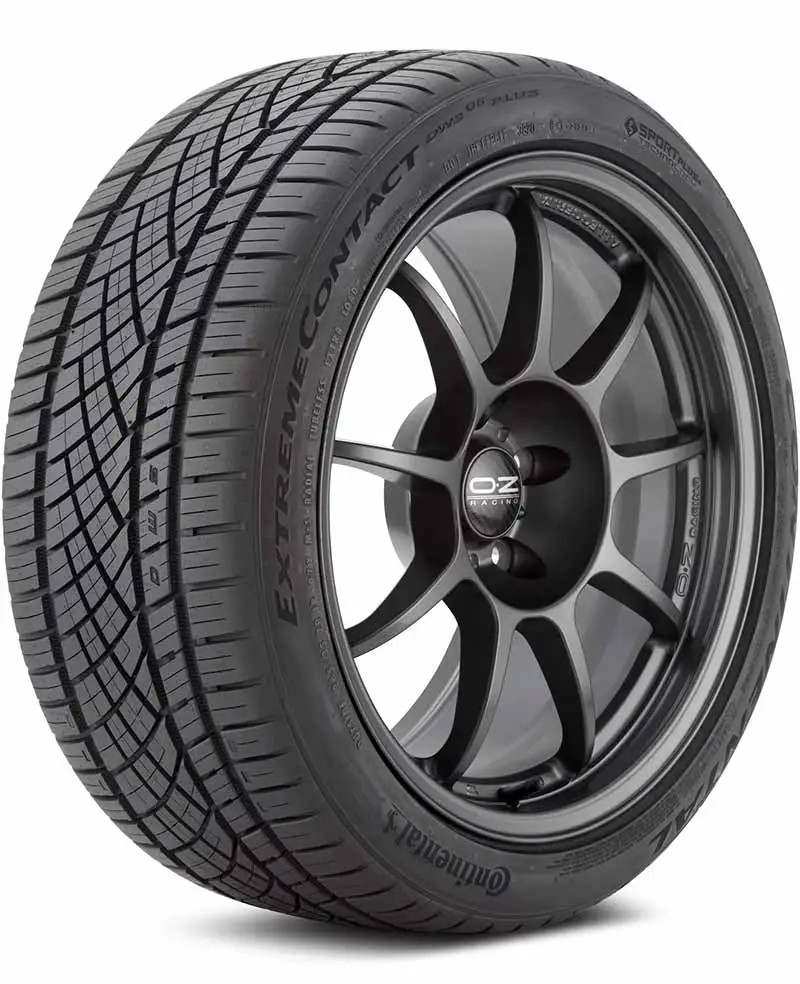While wheel balancing and alignment are two different services, they often go hand in hand. Balancing helps distribute weight evenly across your tires, while alignment ensures that your wheels point in the correct direction.
When To Do Wheel Balancing And Alignment
You should do wheel balancing and alignment every 10,000 miles or sooner if you are experiencing symptoms of wheel imbalance or alignment problems.
When both of these services are performed together, it can help maximize your tires’ lifespan and prevent premature wear and tear while saving you a trip to your local tire shop.
Let’s take a closer look.
Wheel Balancing Vs Alignment
Both of these services are important to keep your car or truck driving smoothly, but they actually address different issues:
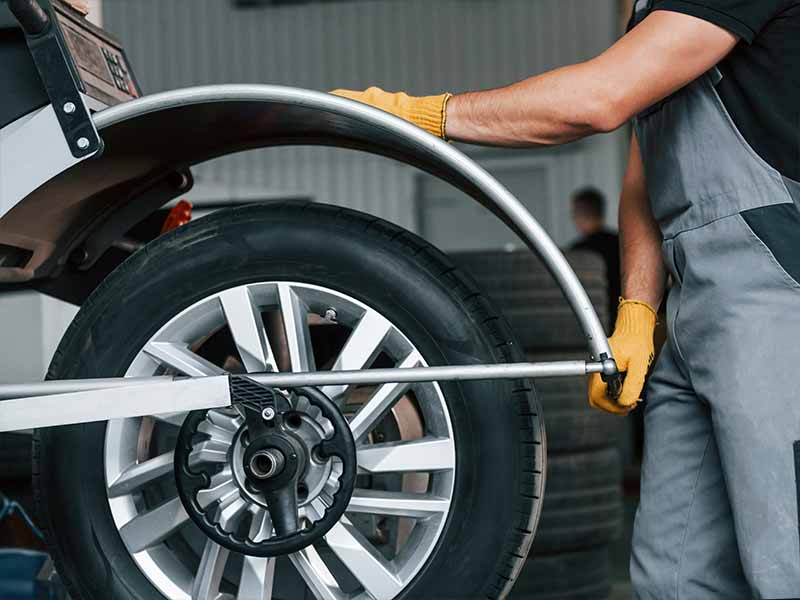
What Is Wheel Balancing
Wheel balancing refers to the process of making sure that the weight of the tire and wheel assembly is distributed evenly around the axle.
If one point around the wheel or tire is heavier than the others, it can cause the tire to wobble or bounce as you drive, which can lead to uneven wear, reduced performance, and even safety hazards.
To fix this, your tire tech will attach small weights to the rim to balance out any weight discrepancies.
Wheel Balancing Symptoms
Wheel balancing is a critical part of tire maintenance. When your tires aren’t properly balanced, it can cause unwanted problems that can affect your driving experience and cost you money.
Steering Wheel Vibration
One of the most common symptoms of unbalanced wheels is a vibration or shaking sensation in your steering wheel. This can happen at various speeds, but it’s usually most noticeable at highway speeds. If you’re feeling a vibration, it’s a good idea to get your wheels checked out as soon as possible. Not only is it annoying, but it can also cause uneven wear on your tires, which can shorten their lifespan.

Uneven And Excessive Tire Wear
Another symptom of unbalanced wheels is uneven tire wear. When your wheels aren’t balanced, it can cause certain parts of your tire to wear down faster than others. You might notice that your tires are wearing down more on one side than the other or that the tread is wearing down in a diagonal pattern. This can make your tires less effective at gripping the road, which can be dangerous in wet or icy conditions.

Pulling To One Side
Lastly, unbalanced wheels can also cause your car to pull to one side or the other. This can be frustrating, especially if you must constantly correct your steering to keep your car or truck driving in a straight line. If you’re experiencing any of these symptoms, it’s time to take your vehicle in for wheel balancing. Your tires (and your sanity) will thank you!
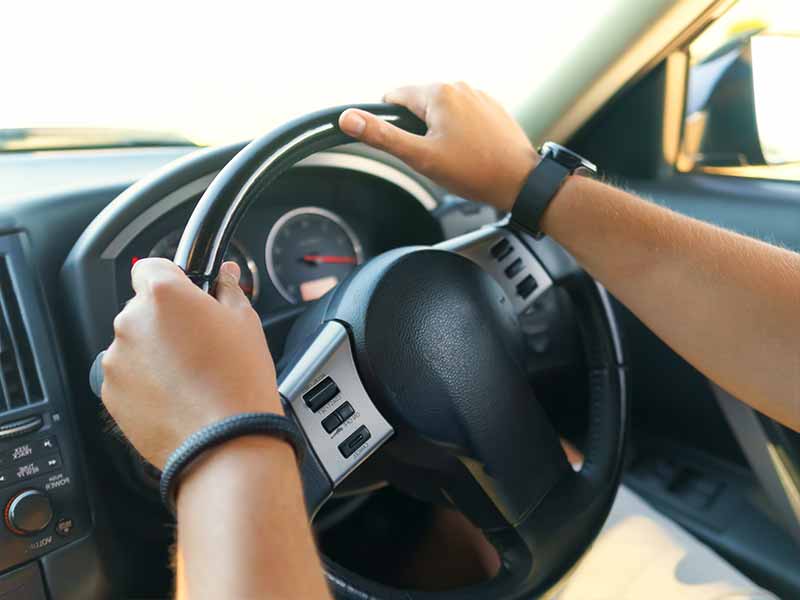
When To Do Wheel Balancing
Having your wheels balanced regularly is a good idea as part of your routine tire maintenance.
That being said, there are certain times when you should definitely have your wheels balanced. If you’ve just gotten new tires installed, for example, it’s a good idea to have them balanced right away. This will ensure that they wear evenly and that you get the maximum lifespan out of them.
If you’ve recently hit a pothole or curb, you should also have your wheels checked for balance. Even a small impact can throw your wheels out of balance, and it’s better to catch the issue early before it causes more serious problems.
You should also pay attention to any symptoms of unbalanced wheels, such as vibration or shaking in your steering wheel, uneven tire wear, or pulling to one side. If you notice any of these symptoms, it’s time to take your car in for wheel balancing.
I recommend having your wheels balanced at least once a year or every 10,000 miles. It’s a simple and relatively inexpensive service that can make a big difference in the performance and longevity of your tires.
What Is A Wheel Alignment
Alignment, on the other hand, refers to adjusting the angles of the wheels so that they are perpendicular to the ground and parallel to each other. When your wheels are out of alignment, it can cause your vehicle to pull to one side, which can be frustrating and even dangerous. It can also cause uneven tire wear, which can shorten the lifespan of your tires. A mechanic can adjust the camber, caster, and toe angles to get your wheels back in alignment.
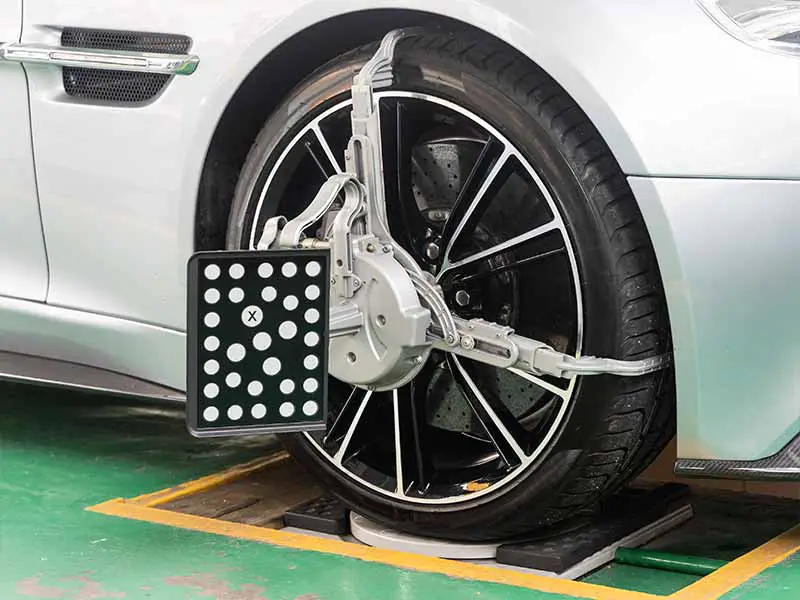
Wheel Alignment Symptoms
Wheel alignment is another important factor to consider. If your wheels are out of alignment, it can cause a range of symptoms that can affect your driving experience.
One of the most common symptoms of misaligned wheels is pulling to one side or the other. You might notice that your car seems to drift to the left or right, even when you’re driving on a straight road. This can be frustrating to deal with, and it can also cause uneven wear on your tires.
Another symptom of misaligned wheels is uneven tire wear. If your wheels aren’t aligned properly, it can cause certain parts of your tires to wear down faster than others. You might notice that the tread is wearing down in a diagonal pattern or that one side of the tire is more worn than the other. This can make your tires less effective at gripping the road, which can be dangerous in wet or slippery conditions.
If your steering wheel is off-center, that’s another sign that your wheels might be out of alignment. You might notice that you have to turn the wheel slightly to one side to drive straight. This can be a minor annoyance but can also cause uneven wear on your tires.
When To Do Wheel Alignment
One of the most important times to get a wheel alignment is when you’re getting new tires installed. This will ensure that your new tires wear evenly and that you get the most tread life out of them.
You should also consider getting a wheel alignment if you’ve recently hit a pothole, curb, or other obstacles. Even a minor impact can knock your wheels out of alignment, and it’s important to catch the issue early before it causes more serious problems.
If you’re experiencing any symptoms of misaligned wheels, such as pulling to one side, uneven tire wear, or an off-center steering wheel, it’s definitely time to get a wheel alignment. Ignoring these symptoms can cause your tires to wear down unevenly, which can lead to more serious problems down the line.
I recommend getting a wheel alignment every 10,000 miles or more frequently if you drive on rough roads or often hit obstacles. Your mechanic can check the alignment of your wheels and make any necessary adjustments to keep your tires wearing evenly and your driving experience smooth and safe.
Resources
Below are some links you may find helpful when learning about tires
Final Thoughts
By having your wheels balanced and aligned every 10,000 miles or once a year, you can help to prevent premature wear and tear on your tires, improve your gas mileage, and enhance your overall driving experience.
Remember, if you notice any symptoms of unbalanced or misaligned wheels, such as vibration or pulling to one side, don’t hesitate to take your car in for service. Ignoring these symptoms can cause your tires to wear down unevenly, which can lead to more serious problems down the line.
Good luck and happy motoring.
